
1.e4 c5 2.Nf3 e6 3.d4 cxd4 4.Nxd4 Nf6 5.Nc3 Nc6
In blog post 34 I recommended to play the Four Knight Sicilian for a couple of reasons. Many of my students started to play it since then, either supported by my analyses or by taking online lessons. It is time, to add some more comments, also including statistics.
If you intend to play the Four Knights yourself, you should be acquainted with the four most frequent lines right from the start.

The second tier lines should also be studied in the long run, but the probability to meet them is much lower.

Note that 6.Bf4 is a good move, but has no independent significance, if you follow my advise to continue with 6..Bc5. After 7.Ndb5 the same position is reached as after 6.Ndb5 Bc5 7.Bf4.
Now, let’s have a closer look at each of these reasonable moves:
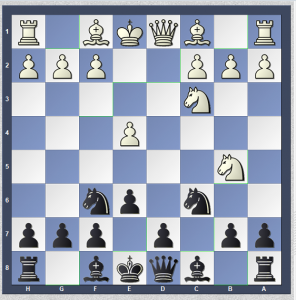
The 57,4% for 6.Ndb5 look very scary, indeed. However, by zooming in, we realize that the bad result of 6..Bb4 (59,4%) distorts the number for the worse. As you know, my recommendation is 6..Bc5, which performs well with 52,7%.

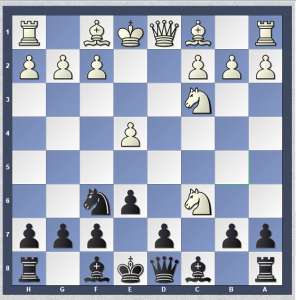
Also 6.Nxc6 scores well with 55,6%. It is a line which has to be intensively studied, since it can lead to sharp and also strategically demanding positions. My explanation for its good results is that it is a very aggressive and concrete approach, which generally attracts strong players. Hence, we might talk of a slight expert bias here. Even though this line has to be approached with great respect, I accomplished equality in all variations of my analyses.
As an interesting side note, let me mention that on a level of Elo 2200 and below (sometimes also above), the line 6.Nxc6 is often (ab)used to solve the opening problems in a very undemanding fashion. For that reason, after 6..bxc6 the move 7.Bd3 is very popular. Apparently, White didn’t play 6.Nxc6 to go for Black’s throat, but just to develop peacefully with Bd3, 0-0, Qe2 etc.
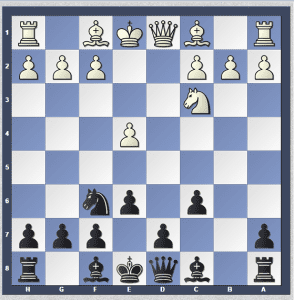

Then, after 7..d5 Black has instant equality. Now, it is a philosophical question whether one wants to spent his time on such positions or not. One approach would be to focus on the critical lines alone. Another philosophy would be to concentrate on that which is very popular, whether critical or not, and what has to be expected with the highest likelihood. I followed a comprehensive approach, covering everything and not omitting the easy lines such as 7.Bd3. In my opinion, with Black it is as important to avert the += as it is to aspire the =+ if White gives us the opportunity, by learning what laws govern the position type and deducting the most promising plans from that.
But even if White continues with 7.e5, it doesn’t mean that he will be going for the most principled way. After 7..Nd5 there is the cheap line 8.Nxd5, which is pretty popular and which once was played against me in 1982 (see blog post 2). After that, Black already can play for a slight advantage, as my analyses indicate.
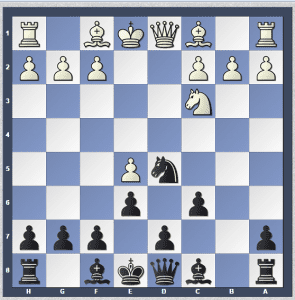

The bottem line is that even in the critical variations against the Four Knights, there are many sub par niches which are populated by sub 2200 people. From a pragmatic point of view the value of an opening also depends on the quantity of opportunities it gives to our opponents for choosing bad quality paths. The Four Knights provides ample opportunity for this.
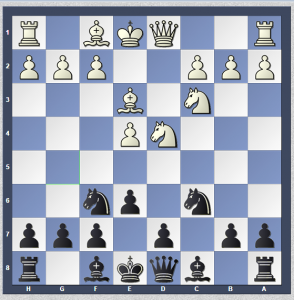
6.Be3 scores miserably with 40,8% and even worse, if we consider the 39,2% after our answer 6..Bb4.
Many White players are fond of the English Attack, introduced by 6.Be3, which can be employed versus the Najdorf, the Scheveningen, the Taimanov and others. So, when confronted with the relatively unknown Four Knights, they simply follow the same recipe. Here, however, this setup is outright bad, because of the active possibility 6..Bb4. The one-fits-all-approach met its master.
When looking at the statistical diagrams above, you have to take into account that the Online Database mainly consists of the games of strong international tournament players. However, my students have confirmed that the moves they encounter most often in blitz games (only there we can talk about a sufficiently strong sample size) are 6.Be3 and 6.Be2. Hence, my thesis is the following:
If you only consider games of white players with Elo 2200 or below, 6.Be3 would actually be on top of the list, in front of 6.Ndb5 or 6.Nxc6.
That’s why I am always saying that the Four Knight Variation is particularly efficient on the level where more than 95% of all club players can be located.
Also take in account the variety of bad quality niches within the demanding lines 6.Ndb5 and 6.Nxc6, as partly mentioned above.
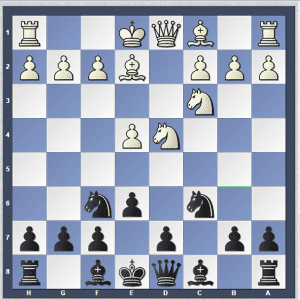
With 46,6% also 6.Be2 fails to impress and the 44,6% after 6..Bb4 look even grimmer. However, taking into account that also players such as Ponomariov, Rublevsky and Adams have resorted to it, you cannot call it a bad move. The bad results partly stem from the fact that 6.Be2 is the typical nondescript development move one would expect from players who have no idea about the theory of this line, due to a general lack of ambition to build up a demanding opening repertoire. This kind of player is to be located more on the weaker side. For that reason, a good expression for this statistical phenomenon might be indifference bias (ignorance bias would sound a bit harsh) as opposed to expert bias.
Despite the good results of 6..Bb4 I decided to provide a repertoire based on 6..d6, which leads to the Classical Scheveningen. The results of 50,1% are very promising.
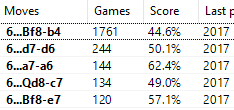
To get a better idea in terms of sample size we should have a look at the standard move order of the Scheveningen:
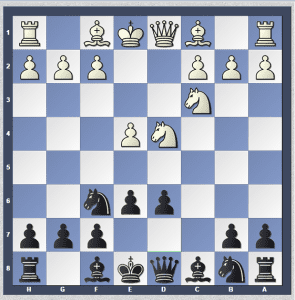

50% within a sample of more than 12.000 games is an impressive result. I actually would play the Schevi on a regular basis, if it wasn’t for the monster 6.g4, named Keres Attack, which served me very well with the white pieces when I was still playing 1.e4. Fortunately, the Four Knights move order provides a good opportunity to enter the Scheveningen without having to bother with the Keres Attack.
Many of my readers might be somewhat reluctant to play the e6, d6-structure, fearing to be attacked on the kingside by means of f4, g4, g5, f5 etc. This indeed can be a nightmare, if you lack experience with this position type. I therefore provide a repertoire based on good, solid sidelines, where Black will not be molested by systematic attacks.
I still owe you an explanation why I decided against 6..Bb4 (except for being a Schevi-fan). After 7.0-0 Black is forced to capture the pawn with 7..Bxc3 8.bxc3 Nxe4, when the material unfolds as follows:
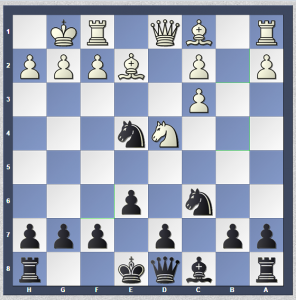
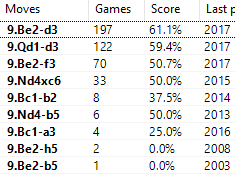
As you can see, White’s performance after the best moves 9.Bd3 and 9.Qd3 doesn’t look as bad anymore. That by itself is no deterrent, since it is well possible that Black’s options are strongly polarized between bad ones (spoiling the average) and good ones, which would be our choice. And indeed, I assume that Black is doing fine in all these lines, if he follows the path of quality.
However, the problem I see for the average user is that finding quality here by mere intuition is difficult, because the positions are very sharp. But even if you did your homework…… will you be able to recall your analyzes during the game?
Then there is another problem. Many of the resulting positions are extremely drawish, due to the existence of opposite colored bishops. Are you prepared to concede a draw to inferior opponents? I know, sometimes this is unavoidable, but this line here is full of respective liquidations.
My approach is different. Whenever possible, I don’t want to rely on the power of my memory (which was never a great asset even when I was young and is in the process of deterioration with every day that passes), but rather play solid positions on the ground of common strategic ideas. There, a mistake will not be punished as hard and the chance to find the right moves by normal positional reasoning is very high. Secondly, I always aspire to retain my winning potential, so that I can beat inferior opposition. It is these two qualities which make the move 6..d6 so attractive for me as a response to 6.Be2. But in the end, everyone has his own approach and many things depend on taste.
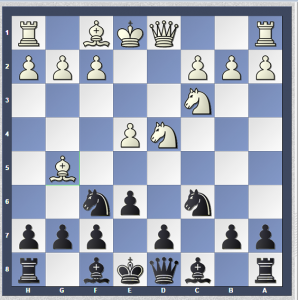
6.Bg5 performs badly with 41% and is not nearly as good as in the Classical System with the pawn on d6 instead of e6, where it constitutes the Richter-Rauzer Variation. Here, Black can achieve a good game either by 6..Bb4 or by 6..Be7 (or 6..h6 7.Bh4 Be7 respectively), when the tactical motif of Nxe4 strongly reduces White’s options.
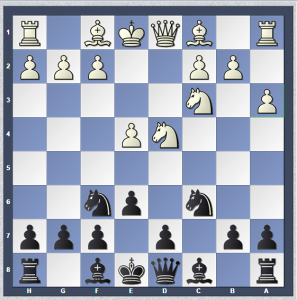
6.a3 performs decently with 52,5% and is chosen also by strong players. Since 6..Bb4 is excluded, most Four Knight players have to continue with 6..d5 7.Bb5 Bd7 8.exd5 exd5 with an IQP as a consequence. While this surely is playable for Black, it wouldn’t be my cup of tea, because it leaves Black with reduced winning potential.
The astute reader might already have guessed, that the line 6.a3 provides one more argument for learning the Classical Scheveningen as a response to 6.Be2. As a Schevi-player you can now simply play d6 and enjoy an improved version of the Scheveningen, since the move a3, despite being generally useful, cannot be counted at full tempo value.
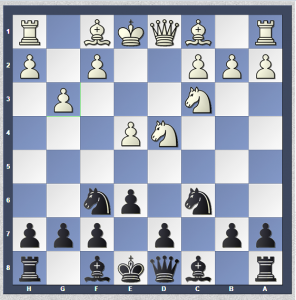
6.g3 performs pretty well with 53,6% and in my opinion this reflects its approximate value. It is the most underrated move and would belong on place three in my personal ranking. While it doesn’t have to be your major concern due to its comparatively rare occurrence, it yet should be respected in terms of strengths.
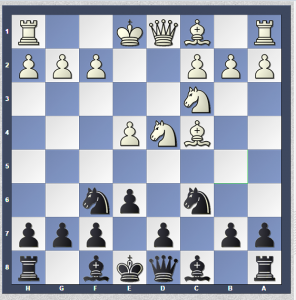
6.Bc4 performs poorly with 35,9% and does rightly so. With Black’s pawn still on d7, the bishop bites on granite and is quite exposed where it stands. According to my analyses 6..Qc7! is best, playing an improved Taimanov.
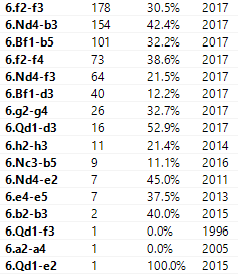
The rest is pretty much garbage, except for 6.Nb3, which is playable but pretty blunt after 6..Bb4 7.Bd3 d5 and 6.Qd3, which is clearly underrated. You should continue with 6..Bb4, but be careful with 6..d6, since after 7.Bg5 followed by 0-0-0 you would have to play a kind of Richter-Rauzer.
Besides 6.Be3, the most overrated move surely is 6.Bd3 😉 . While sometimes this might have been caused by an error in the notation (while 6.Be3 was played), in the majority of cases White indeed blundered the piece.
Now, I wish you good luck with the Four Knights and many 6.Bd3 games to come!
